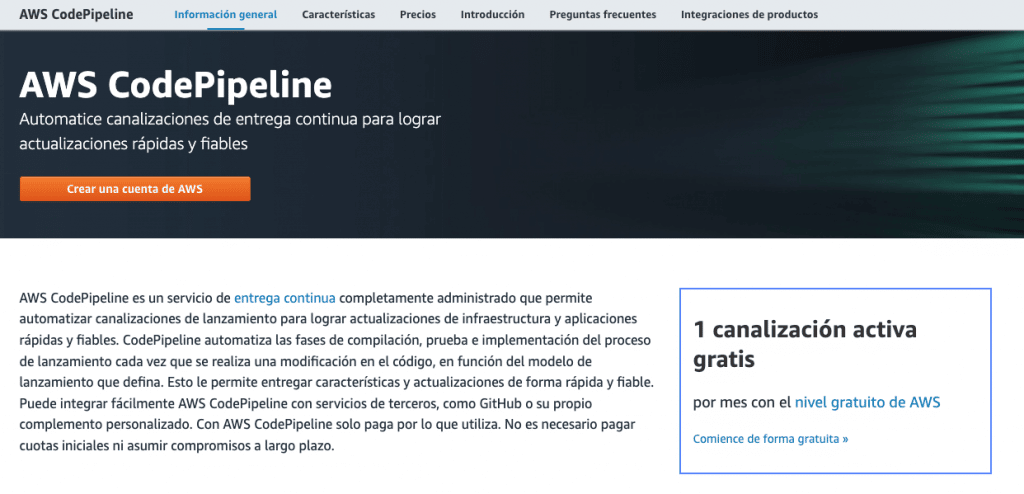An article published in April 2021 by Óscar Jiménez El Confidencial, was titled "34,000 M prize for banks for applying well i [...]
Read More »One of the decisions facing a company in need of an IT infrastructure is the choice of where to locate this infrastructure. Whether it is company data, software applications, customer services and other IT resources, it must be decided where they are deployed.
Depending on the business needs, deployments can be done locally (on-premise), on the company's servers, or in the cloud, where the deployment is done on a third party's server.
There are a variety of advantages and disadvantages to both types of deployment. There are businesses that, for privacy, security or availability reasons, cannot consider a cloud deployment solution. In this article we are going to focus on the facilities that cloud deployments bring to the automation of a CI/CD pipeline.
First we will look at what a CI/CD pipeline is and then we will briefly explore the possibilities offered by cloud providers such as Amazon and Azure.
CI/CD stands for Continuous Integration and Continuous Deployment. The CI/CD pipeline is the steps involved in delivering a new version of a software application. The specific steps of a CI/CD pipeline vary from business to business, but typically include design, test, release, production deployment and validation.
The value of the CI/CD pipeline lies in its automation. When software distribution steps are automated, new releases can be deployed quickly and frequently, resulting in reduced time to fix bugs and improved software quality.
The problem that Continuous Integration is trying to solve is the one that arises when several developers upload changes to their respective branches of the project repository. As changes accumulate, the code in each branch becomes less and less similar to the project code base. This results in what is known as "integration hell" or "merge hell", where more time is spent putting together the changes from multiple developers, rather than making the changes themselves.
Continuous Integration prevents this situation by joining the branches of the different developments, compiling and testing the code each time a developer uploads changes to their respective branch. In this way, if at some point the integration of changes in one branch creates a conflict with changes in another branch, this conflict will be detected early and can be resolved in time.
Continuous deployment refers to a software engineering practice where new functionality is delivered through automatic deployments. Typically, the new version of the service is deployed and the service begins to service new requests. When the previous version of the service finishes processing the pending requests, it is removed from production.
This practice should not be confused with Continuous Delivery, which is a practice in which the software being developed has short cycles and ensures that there is always a new version to be deployed, even if it is not. In addition, in Continuous Delivery, deployments are still manual.

Amazon AWS provides the service AWS CodePipeline which is a framework that enables the compilation, testing and deployment of software in production. Through AWS CodePipeline you can automate these processes to implement CI/CD policies. AWS CodePipeline uses Amazon AWS tools and resources such as EC2 instances, S3 storage and AWS CodeCommit to implement the pipelines configured in the AWS CodePipeline service.

Microsoft Azure provides Azure Pipelines and Azure Test Plans services as part of its suite. Azure DevOps. The Azure DevOps service package is a service that enables software lifecycle management. The Azure Test Plans service allows you to define Continuous Integration policies that compile and test the code that is uploaded to a repository. If there are no problems, Azure Pipelines would take care of generating the application artifacts. Finally, those artifacts would be deployed to Azure App Service. All of these steps can be automated to implement CI/CD policies.

Google Cloud provides the service Cloud Build which, similar to Amazon AWS and Microsoft Azure, allows you to import code from a repository, compile it, test it, and generate artifacts that would be deployed via Cloud Deploy to Cloud Run. Cloud Build allows you to define what it calls build steps, each of which would run in a Docket container. All Cloud Build steps can be automated to deploy CI/CD policies.
A CI/CD pipeline enables rapid testing and deployment of a new software release, while preventing code integration problems, especially in large teams. This results in improved code quality and service quality by minimizing response times to a production issue.
The main cloud hosting providers provide tools to easily and conveniently implement a CI/CD pipeline. They have visual editors that allow you to define automated build, test and deployment processes to efficiently manage the software lifecycle. The alternative to these services is to manage the pipeline on-premise, which implies the purchase and administration of a dedicated infrastructure.
► You may be interested in: Cloud solutions for SMEs
An article published in April 2021 by Óscar Jiménez El Confidencial, was titled "34,000 M prize for banks for applying well i [...]
Read More »Natural Language Processing or NLP analyzes how machines understand, interpret and process human language.
Read More »Software as a Service (SaaS) companies have gained enormous prominence in the last few years, mainly due to the novelty of the products [...]
Read More »Artificial Intelligence is transforming the way in which companies relate to their customers, how work is managed, the way they work, the way in which [...]
Read More »